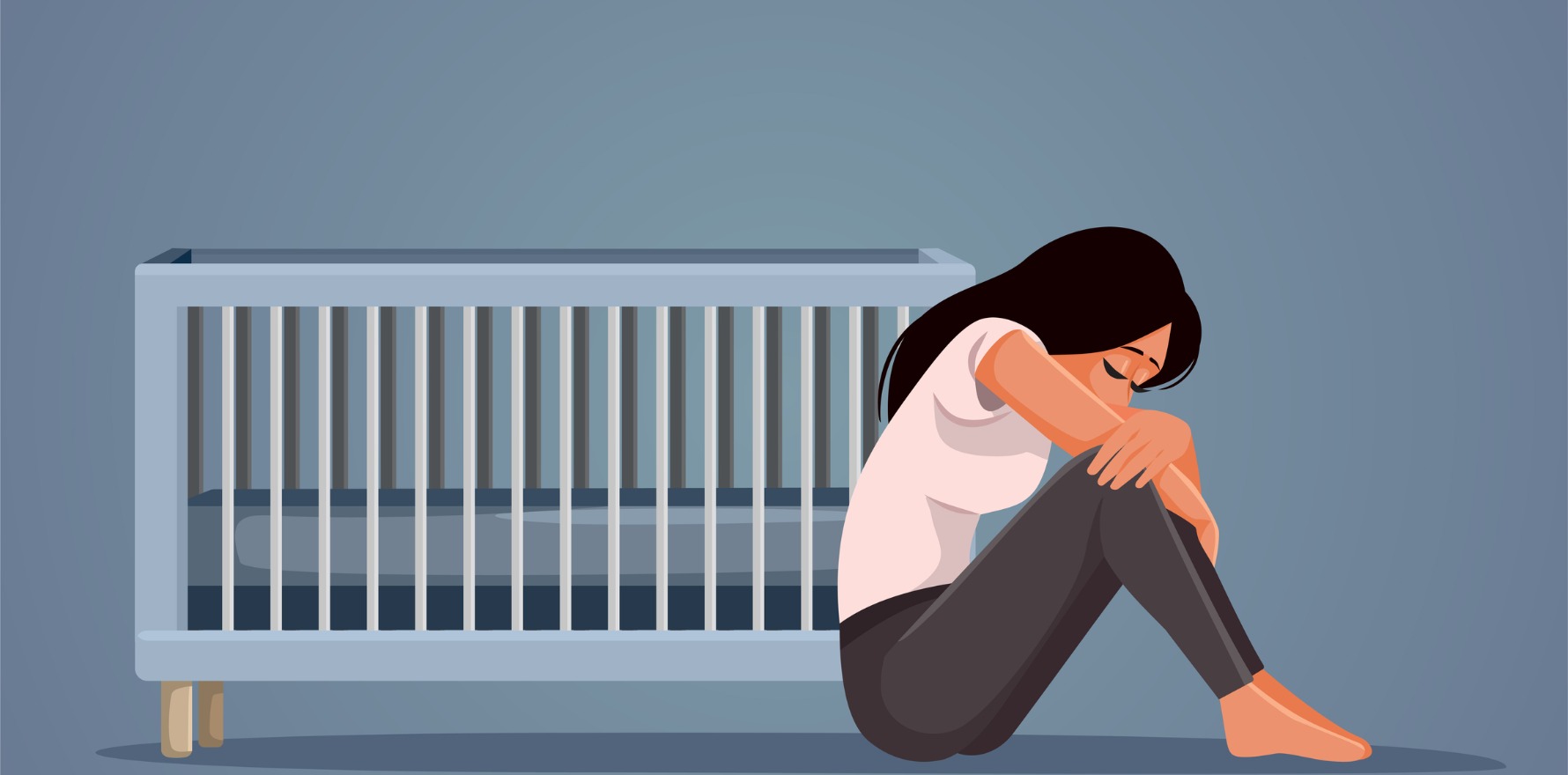The new resource has been designed for both patients and clinicians.
The first Australasian guidelines for recurrent pregnancy loss have been released, with experts hoping they will simplify and speed up investigations for anxious and distressed couples.
Various international guidelines for the investigation and management of recurrent pregnancy loss already exist, but, to date, none have been developed in and for Australia.
Now, an expert group of specialists have developed the first Australasian consensus statement on current management approaches for recurrent pregnancy loss. The new guidelines were published in the Australian and New Zealand Journal of Obstetrics and Gynaecology.
The consensus statement has defined recurrent pregnancy loss as two or more pregnancy losses before 20 weeks gestation with the same partner, rather than at least three losses before 24 weeks used in most international guidelines.
Dr Anthony Marren, a Sydney-based obstetrician and gynaecologist, said GPs shouldn’t still feel the need to adhere to older international guidelines that require three consecutive pregnancy losses before offering investigations and testing.
“It just has to be two positive pregnancy tests – they don’t have to be confirmed on ultrasound – [and] they don’t necessarily have to be consecutive [losses]. But if someone’s had two losses, they should be offered the investigations and patients can [then] make a choice regarding whether or not they want to go through the testing,” said Dr Marren, who contributed to the development of the new guidelines.
“These guidelines provide a standard set of investigations that should be offered to patients with recurrent pregnancy loss. And if these investigations are done by the GP [before] the couple are sent off to a fertility specialist for investigation, then that should make life easier for everyone.”
The group conducted a comprehensive literature review before generating a series of statements surrounding the definition, investigation and management of recurrent pregnancy loss.
Each statement was graded based on the level of supporting evidence (ranging from case series through to being a good practice principle) and the level of agreement between the experts in the group (ranging from no consensus through to a unanimous consensus with no caveats).
Chromosomal factors
Aneuploidy – when there are more or fewer chromosomes than there should be – is the leading cause of both sporadic and recurrent pregnancy loss. There was a unanimous consensus for taking a detailed family history (including other family members who experienced fertility and pregnancy issues) and karyotyping both partners. Genetic counselling should be offered if karyotyping reveals abnormalities.
Anatomical factors
Congenital uterine anomalies occur in up to 15% of patients experiencing recurrent pregnancy loss. The gold standard for investigating such anomalies is a combined hysteroscopy and laparoscopy, although a sonohysterogram in combination with an ultrasound is also an appropriate first-line investigation.
One such anomaly is a uterine septum. Dr Marren, who is also a fertility specialist and reproductive surgeon, said although there was less conclusive evidence that surgical resection of a uterine septum could reduce recurrent pregnancy loss, the expert group felt it was reasonable to offer the procedure after appropriate counselling and discussion of the risks and benefits.
“A lot of the international guidelines have been very negative and basically taken the stance that resection of the septum shouldn’t be done,” he said. “And you sit there and think, ‘well, what are you going to offer these patients?’”
Endometrial polyps are another common abnormality, affecting 6-9% of women with recurrent pregnancy loss. There is little data to suggest polyps are linked to an increased rate of miscarriage or other obstetric outcome, but removing the polyps may improve pregnancy rates.
Thrombophilia factors
The guidelines recommend women with recurrent pregnancy loss should be screened for acquired thrombophilias, namely antiphospholipid syndrome. Pregnant women with both recurrent pregnancy loss and antiphospholipid syndrome should be started on low-dose aspirin and heparin.
In contrast, there was no clear link between inherited thrombophilias (e.g., Factor V Leiden or antithrombin deficiency) and recurrent pregnancy loss. Genetic screening for these inherited conditions should not be performed in women with recurrent pregnancy loss.
Related
Endocrine factors
The thyroid appears to be important in this condition, with varying levels of evidence suggesting both hypo- and hyperthyroidism are associated with recurrent pregnancy loss. Thyroid function tests including thyroid stimulating hormone (TSH) and free thyroxine 4 (FT4), as well as testing for thyroid antibodies (thyroid peroxidase and thyroglobulin) are recommended. Further testing (free triiodothyronine 3 and thyrotropin receptor antibodies) should also be performed if TSH levels are low or suppressed.
The expert panel noted polycystic ovarian syndrome may be associated with recurrent pregnancy loss, but noted the link was less certain due to confounding factors such as obesity and insulin resistance.
The evidence linking hyperprolactinaemia and recurrent pregnancy loss was unclear, despite the guidelines recommending testing prolactin levels in women where hyperprolactinaemia is suspected. Referral to an endocrinologist is recommended where hyperprolactinaemia is confirmed.
Autoimmune factors
Although immunogenic factors – such as human leukocyte antigen antibodies and natural killer cells – have been hypothesised to contribute to recurrent pregnancy loss, HLA antibody determination is not recommended in clinical practice.
Infective, inflammatory & endometrial factors
There was some evidence to suggest endometriosis is more common in women with recurrent pregnancy loss. However, further research is needed to confirm that treating endometriosis improves birth rates. Women with unexplained recurrent pregnancy loss should consider an endometrial biopsy to test for chronic endometriosis.
There was little to no evidence linking adenomyosis to recurrent pregnancy loss.
Environmental & lifestyle factors
The strongest evidence linking environmental and lifestyle factors to recurrent pregnancy loss was observed for psychological stress, albeit through correlation rather than causation.
The guidelines recommend couples experiencing recurrent pregnancy loss stop drinking alcohol and smoking while limiting caffeine intake, although the evidence for these factors being a cause is limited. The comprehensive review found no evidence suggesting heavy metal screening was required in patients with recurrent pregnancy loss.
Male factors
Similarly, the management of male factors contributing to recurrent pregnancy loss involves lifestyle approaches: keeping a healthy weight, quitting smoking, reducing alcohol intake and being moderately active. These approaches aim to minimise sperm DNA fragmentation, which has been indirectly linked to recurrent pregnancy loss.
Unexplained factors
Between half and three-quarters of cases with recurrent pregnancy loss cannot be explained by any of the eight other factors. After investigating and ruling out all other factors the recurrent pregnancy loss may be treated with progesterone supplements and IVF. Close monitoring with supportive counselling is also recommended.
There were two main reasons why the local guidelines used the earlier 20 timepoint of weeks in their definition of recurrent pregnancy loss, according to Dr Marren.
The first relates to viability.
“When I started my obstetrics and gynaecology training, the teaching was that 24 weeks was the cutoff in terms of viability. Over time that number has crept down a little bit. Most centres would offer resuscitation [at] about 23 weeks, and some are even less than that,” Dr Marren told TMR.
The second relates to how Australia defines births and deaths from a legal perspective.
“In Australia, the birth and the death are not legally registered if the loss occurs [at] less than 20 weeks. Whereas if a baby is born after 20 weeks the birth and the death are registered,” Dr Marren explained.
A shorter, plain language summary of the guidelines that has been designed for patients will be published by the journal in the near future. This document will be freely available for GPs to download once it has been finalised.
Australian and New Zealand Journal of Obstetrics and Gynaecology 2024, online June 27 (Part 1)
Australian and New Zealand Journal of Obstetrics and Gynaecology 2024, online June 27 (Part 2)






